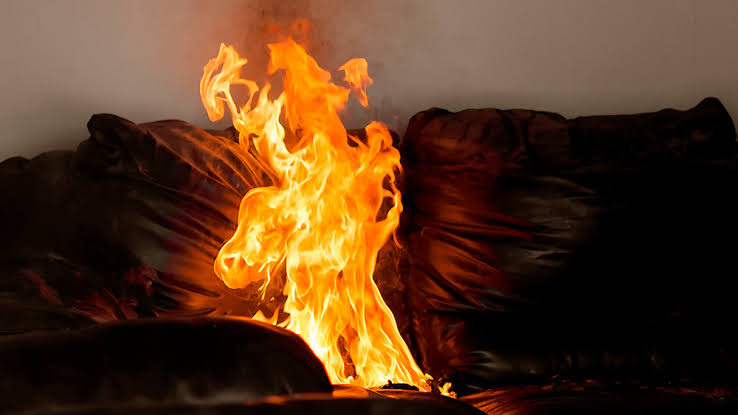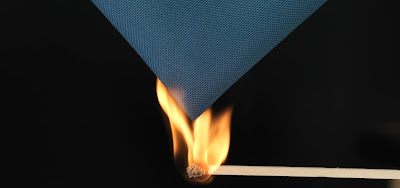What
are Heat
Resistant Fabrics?
Fire-resistant
fabrics or Heat resistant fabrics
are designed to be used by employees working in industry as a defense
shield against hazards that occur in their workplaces, by exposure to
warm and molten steel, blinding flames and arc bursts or dust
explosions. Materials are most likely to be caught in the flames in
these situations, but in the case of flame-resistant materials, these
fabrics have self-extinguishing properties that stop burning after
the material is separated from the fire source and further prevent
ignitions without melting or harming the wearer.
In
a case where there is a fire hazard at the workplace, these heat resistant fabric serve as a safety shield. A shield of cloth trap that traps air
inside its fibers and this air extinguishes any flame that might
catch on it. The self-extinguishing properties of these fabrics make
it possible for the worker to get out of the fire immediately.
Although
sudden fires are not as frequent, fire is still a danger that happens
every day due to fast-moving machinery and metal melting in the
factory. It is very likely that a worker will come into contact with
these warm surfaces and burn themselves, but if they wear a
heatproof, they will not be burnt in the process and return home
safely.
These
protective clothing provide employees with a sense of comfort in a
harsh environment. When the workers feel safe from all the hot and
fiery dangers that lurk around in their workplace they can focus on
their work and give the best possible results. Using heat
resistant fabrics
may not end the possibilities of mishaps happening in the workplace
but it can minimize the severity of the accidents that might occur.
Types
of heat resistant clothing
There
are a lot of types in heat resistant textiles but the can be summed
in two main categories such as inherent and treated heat
resistant fabrics.
The variations are quite minor between these two because they both
have the same function that is to protect the person who wears them.
However, they do have characteristics that make them different.
Inherent
or Natural Fabrics
Like
the name tells us, these fabrics are naturally heat resistant. The
material that is made into this fabric is a poor conductor of heat as
it does not allow the transfer of heat energy from the heat source to
the body. The fibers trap air molecules within themselves which
provides invisible insolation to the body. This property can be
enhanced by mixing different fibers together and creating more
effective clothing for heat protection. An example of such material
is cotton which is grown in fields and is used in a lot of clothing.
The
advantage of having an inherently heat
resistant fabric is
that it provides protection from high heat in the surroundings as it
does not ignite they do burn to an extent but they self-extinguish
themselves.

As
the inherent fabric comes into contact with flame or temperature the
oxidized fibers turn into carbon or charcoal and increase in size
which removes oxygen gas from the fabrics and gives insulation to the
skin from the heat. The fibers are oxidized and they often don’t
shrink when they come into contact with flames or heat. If these
fibers are supposed to get shrunken they would lose the layers that
contain air between them which will decrease insulation that it could
have provided.
These
heat
resistant fabrics
burn for a split second and auto extinguish afterward without letting
any heat pass through them. The fabric does not allow the fire to
spread onto the fabric and slowly the fire goes down in spots.
Inherent workwear fabric does
not contain any chemical coating and this is a good thing as far as
the life span of the fabric is concerned. The chemical that is coated
on fabrics to give them heat resistant properties can be washed away
by detergent and water, so every time that the fabric is washed it
loses its fire resistance. This can be avoided with natural fabrics
as they don’t contain any chemicals on them or inside them.
Treated
Heat
resistant fabrics
Treated
fabrics are made from a natural heat resistant material like cotton.
A lot of times cotton is mixed with other fibers such as nylon or
other types of polyester to make it stronger and less expensive.
Nylon is also a kind of plastic so it can melt in high temperature in
its natural form. The blend can have a different ration depending on
the manufacturer but it is mostly 88 percent cotton and 12 percent
polyester or nylon.
These
mixed heat
resistant fabrics are
coated with chemicals that are flame retardant so fire and heat
cannot pass through the fibers and transfer to the skin. These
chemicals can wash off and are not permanent. These fabrics may not
last long but they can be cared for to last them longer by following
the information on the garment manual.
Treated
fabrics are topical and temporary as many have washing limit and are
less expensive. Companies try to save money on clothing without
risking the quality of the product. Treated Fire
resistant fabrics
are not as comfortable as the natural clothing and are much heavier
so workers might feel uneasy wearing it.
Determining
the quality of the Heat
resistant fabric
In
today's technological world, we are not shocked by a large amount of
heat resistant materials even in the field of heat resistant fabrics.
Every heat resistant material has its own advantages and
disadvantages and it must be determined what kind of material is
needed and what characteristics it should contain.

The
heat resistant type of clothing you buy depends entirely on your
needs. Every heatproof clothing purchased should be checked and
labeled as safe to use by the manufacturer. If the clothing is safe
to use it would be a printed stamp that shows that the clothing
complies with the requirements of the government. You must know what
kind of composites and chemicals are used to produce the material for
any type of safety fabric as this can affect its life and determine
the environment of its use.
Many
heat resistant products last longer than others. The life of a
heatproof textile depends on the frequency and manufacture. Most of
them are made of cotton and polyester blend and some often have a
chemical layer which increases the resistance against fire.
The
best heatproof textile will be long-lasting but may cost more than
the average product, but it will be economical due to its
comparatively longer lifespan.
Taking
care of your Fire resistant garments
Such
textiles can last longer when properly taken care of. As it is being
widely used, the performance of flameproof fabrics declines. When
used, these fabrics often become filthy and must be washed away.
After any fabric is washed, the textiles break against the fibers of
the cloth as a result of the harsh molecules and detergent chemicals.
This weakens the textiles and therefore shortens the life of the
material.
Bleaching
and hard detergent can damage the fibers of the fabric when you wash
these clothes with chemical products, warm water, scrubbing and
squeezing out water with hands are other things that make fabrics
less effective. The flame-proof fabrics can last longer by following
the instructions provided by the manufacturer.
Once
you purchase, an inspection of the clothes is important to determine
its quality and fitness for use. Where the clothes are stitched open,
minor stitching or proper punctures can be applied to repair the
damaged fabric. In the case of tears, the clothing should be
repaired, as tears can jeopardize the quality of the clothing and
lead to a long-term serious accident.

